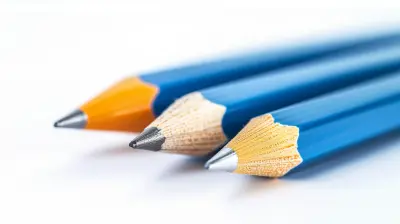22 July 2025
Education isn't just about teaching—it's about learning. And one of the most powerful tools for learning is feedback. But not just any feedback—timely feedback.
Think about it: if a student submits an assignment and gets feedback weeks later, will it still be useful? Probably not. The farther feedback is from the learning moment, the less effective it becomes. So, how does timely feedback impact student achievement? Let’s break it down. 
Why Is Feedback So Important in Education?
Feedback isn’t just about pointing out mistakes—it’s about guiding improvement. It helps students understand what they’re doing well, where they need to improve, and how to get better. Without it, students are basically shooting in the dark, unsure if they’re heading in the right direction.When feedback is given on time, students can quickly adjust, correct errors, and strengthen their understanding before moving on to new concepts. It’s like getting directions midway through a road trip instead of after you’ve already arrived at the wrong destination. 
The Key Benefits of Timely Feedback on Student Achievement
1. Encourages Faster Improvement
Imagine trying to learn a new sport. If your coach corrects your technique immediately, you can fix mistakes right away. But if they wait a month to tell you what went wrong, you’ve already built bad habits. Learning works the same way.Timely feedback allows students to make corrections while the material is still fresh in their minds. They can act on feedback immediately, rather than struggling with the same mistakes over and over.
2. Boosts Confidence and Motivation
Ever submitted an assignment and waited forever for a grade? That uncertainty can be stressful. But when students receive prompt feedback, they know where they stand, and that clarity boosts their confidence.When students see their efforts paying off in real-time, they become more motivated to keep improving. It’s a classic case of positive reinforcement—like getting a pat on the back right after doing something well.
3. Strengthens the Learning Process
Psychologists often talk about the feedback loop in learning. The quicker a student receives feedback, the tighter and more effective this loop becomes.Here’s an example:
- A student writes an essay.
- The teacher provides quick, specific feedback.
- The student identifies their mistakes, revises, and improves.
- That learning sticks, making the next essay even better.
The closer feedback is to the learning experience, the deeper it cements concepts.
4. Reduces Repeated Mistakes
Delayed feedback often means students keep making the same mistakes without realizing it. By the time they get their work back, they’ve already moved on to new material, making it harder to go back and fix misunderstandings.Timely feedback stops this cycle. It corrects misconceptions early, ensuring that students don’t carry the same errors into future topics.
5. Promotes a Growth Mindset
A growth mindset is the belief that intelligence and abilities can develop over time with effort and feedback. Timely feedback fosters this mindset by showing students that mistakes aren’t failures—they’re learning opportunities.When students see immediate, constructive feedback, they understand that improvement is a process. Instead of feeling discouraged, they take ownership of their learning and strive to get better. 
What Does Effective Timely Feedback Look Like?
Not all feedback is created equal. Simply getting a grade back quickly isn’t enough—it has to be meaningful and actionable. Here are a few key characteristics of good feedback:1. Specific and Clear
Saying "Good job!" or "Needs improvement" isn’t helpful. Instead, teachers should highlight exactly what was done well and what needs work.✅ Good feedback: “Your introduction is strong, but your argument lacks supporting evidence. Adding one or two examples would make your point more convincing.”
🚫 Bad feedback: “Your essay is weak.”
2. Constructive and Encouraging
Feedback should help students improve, not just criticize their work. Even negative feedback should have a positive tone, guiding students toward solutions.✅ Example: “Your math process is correct, but you made a calculation error in step three. Double-checking your numbers will help avoid this mistake next time.”
3. Timely and Frequent
The sooner students receive feedback, the better. But it’s also important for feedback to be consistent. If students only get feedback at the end of the semester, they’ve lost months of opportunities to improve.Tip: Even brief, informal feedback—like comments during class discussions—can be powerful.
4. Encourages Self-Reflection
The best feedback isn’t just about telling students what’s right or wrong—it helps them think critically about their own work.✅ Example: “Your conclusion is strong, but does it fully connect to your main argument? How do you think you could make it stronger?”
🚫 Bad Example: “Your conclusion is weak.” 
How Teachers Can Provide Timely Feedback
Teachers already have a lot on their plates, so providing timely feedback can feel overwhelming. Here are some strategies to make it easier:1. Use Technology
Online grading tools, learning management systems, and AI-powered feedback tools can help speed up the process. Even quick voice recordings or short video feedback can be more effective (and faster) than writing long comments.2. Prioritize Key Assignments
Not every single task needs detailed feedback. Teachers can focus in-depth feedback on major assignments while using peer reviews, self-assessments, or automated quizzes for smaller tasks.3. Provide Feedback in Stages
Instead of giving feedback only after the final submission, break it up into stages. For example:- Step 1: Brief feedback on the outline.
- Step 2: Feedback on the first draft.
- Step 3: Final comments for refinement.
4. Encourage Peer Feedback
Students can benefit immensely from reviewing each other’s work. With guidance, peer feedback can provide useful insights while reducing the teacher's workload.Final Thoughts: Timely Feedback Is a Game-Changer
Feedback isn’t just about correcting mistakes—it’s about unlocking learning potential. When students receive feedback at the right time, they learn faster, improve their confidence, and make fewer mistakes moving forward.For educators, implementing timely, specific, and constructive feedback strategies isn’t just beneficial—it’s essential for student success. After all, what good is advice if it comes too late to make a difference?
If we want students to grow, improve, and succeed, we have to give them the support they need when they need it most.








Atlas Rosales
Timely feedback: like pizza delivery for grades! The sooner it arrives, the happier the student. Just remember, no one likes cold feedback—serve it fresh and watch the learning feast!" 🍕📚
November 25, 2025 at 7:28 PM